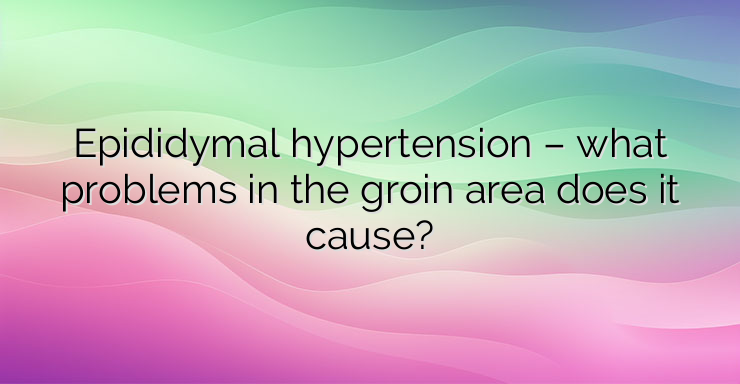What is epididymal hypertension? Epididymal hypertension is a condition that can affect men and is characterized by bluing of the testicles. This condition is not serious, but causes pain in the testicles after erection. Symptoms of epididymal hypertension include: Pain; Discomfort; Severity Why does epididymal hypertension occur? During sexual arousal, the blood vessels of the penis and testicles dilate to allow a greater volume of blood flow, this blood filling allows the penis to become erect. The veins serving to drain blood from the genital area during an erection constrict, allowing the male to maintain arousal. The testicles also increase in size, making them feel heavier. Normally, this blood drains after ejaculation or as a result of reduced physical arousal. An excessive amount of blood may remain in the genital area in some men during arousal that lasts for a long period of time without ejaculation. This position can cause pain and discomfort. The testicles may even start to turn blue due to excess blood and increased blood pressure. A man is more likely to develop epididymal hypertension if he is easily aroused. Masturbation that delays ejaculation also increases the risk of epididymal hypertension. What other causes of testicular pain are there? The presence of pain and discomfort in the testicles, only when the man is aroused, is most likely the result of epididymal hypertension. Regularly experiencing pain in the testicles when a man is not aroused may indicate another problem, such as: Diabetic neuropathy in the groin area; Epididymitis, which is an inflammation of the testicles; An infection that is usually accompanied by inflammation; Kidney stones; Mumps; Orchitis; Testicular cancer; Wearing tight pants Pain can also be a sign of testicular torsion (rotation of the testicle). This condition occurs due to the twisting of the testicles and causes pain and swelling, often requiring emergency surgery. Bibliography: Chalett, JM, & Nerenberg, LT “Blue balls”: A diagnostic consideration in testiculoscrotal pain in young adults Centers for Disease Control and Prevention (CDC). Epididymitis Canadian Urological Association (CUA). Sabbagh, R. (n.d.). A pain in the scrotum and urethral strictures.


Leave a Reply